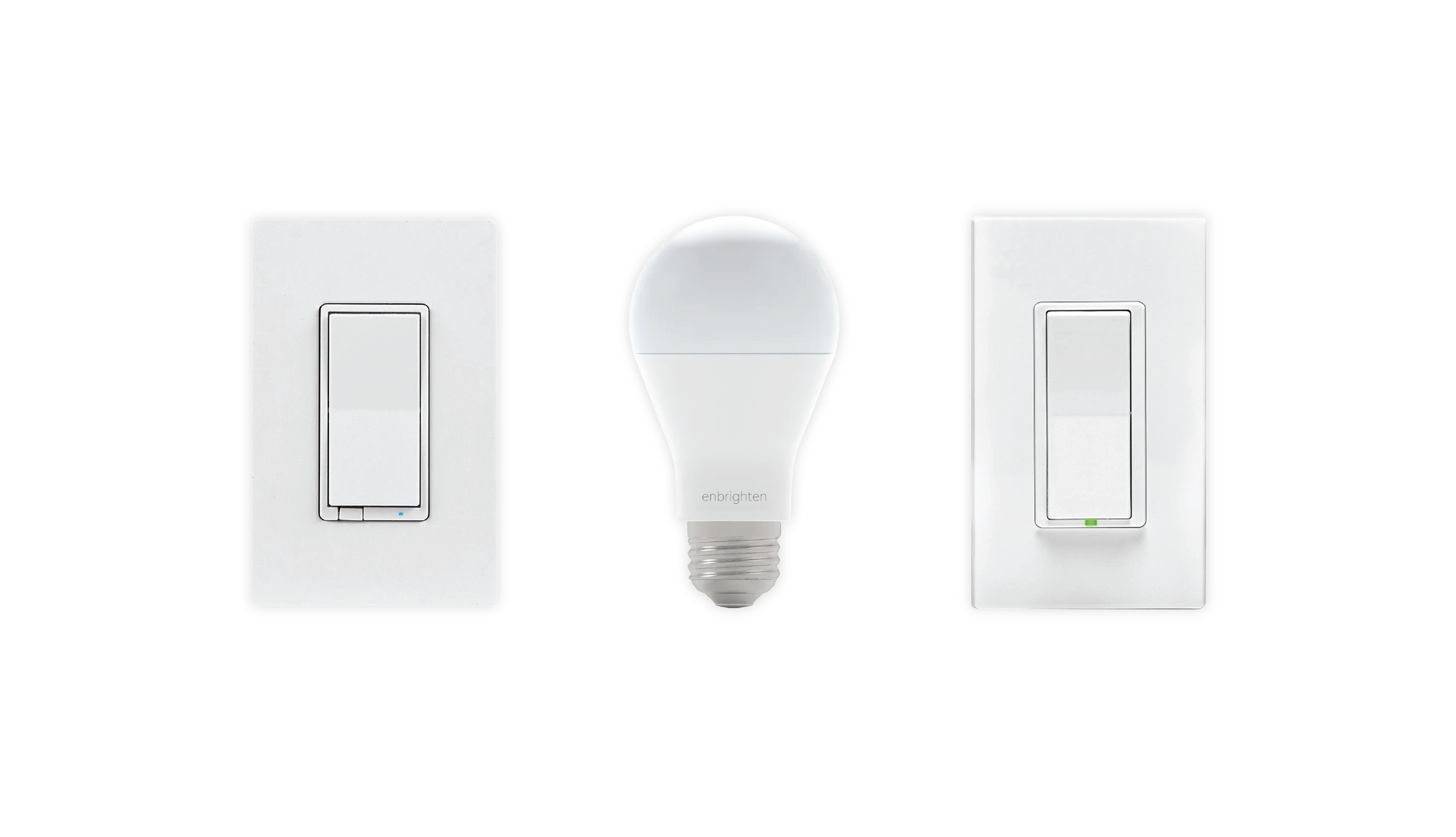Save energy while elevating the resident experience

How to choose smart lighting systems for your multifamily community
Smart lighting components like dimmers and switches require complex installation, while others—like bulbs—may not. So you have flexibility to offer different kinds of smart lighting to residents.
Dimmers & switches
Built-in control
Dimmers and switches are installed directly into walls, giving residents built-in control of their home’s fixtures. When a simple on or off flick will do, install a switch. But for elevated lighting, install dimmers so residents can find the perfect brightness for any situation.
Light bulbs
Control individual bulbs
Smart light bulbs are ideal for when you want individual control of a single bulb rather than a section or an entire roomful of lights. Using smart bulbs in conjunction with the SmartRent app allows you to illuminate specific aspects of a model unit while keeping other lights off to save energy.
Plugs
Control lamps and accessories
Smart plugs are ideal for controlling stand-alone lamps and accessories. Residents can bring their own fixtures and plug them in like normal, then turn everything on and off from the SmartRent app.
Frequently Asked Questions
Smart light switches are installed in an apartment’s walls, just like regular light switches. The difference is that in addition to controlling them manually, you have the option to control them remotely using an app.
Smart dimmers are also installed in walls, but instead of simply switching the lights on and off, you can dim them so lighting can be softer for dining, movies, or nightlights.
Smart light switches are wired into a home’s electrical system, just like a normal light switch. They also connect wirelessly to a hub like SmartRent’s, so you can control them remotely through our app. Using a hub also allows smart light switches to communicate with other devices in the home, like a smart thermostat or smart lock. When you combine these devices, you can create automated routines that turn the lights off, adjust the temperature, and lock the door—all with a single command or at a specific time each day.
Yes. Many smart switches and dimmers automatically turn lights off when residents leave the room for a time, saving electricity. Additionally, dimmers allow you to use lights at less than full power, rather than making you always turn them on at full blast even when you don’t need that much light.
Smart outlets are installed into a wall just like a regular outlet and connect to the internet. They draw a tiny amount of power to stay connected to the internet, but this amount is negligible compared to the possible energy savings.
A smart plug gives residents the same ability to remotely control regular lamps and appliances as a smart outlet, but smart plugs don’t require installation. You just plug them into a regular outlet for power and connect them wirelessly to the SmartRent hub.
Alloy SmartHome
Hardware designed for smart communities
Our in-house smart home equipment does it all. Build the perfect smart apartments with Alloy hubs, thermostats, and sensors. Fully integrate them with the proptech you already use, and control everything with a single app.

Solutions powered by Alloy

Access Control
Access control panels, readers and intercoms optimize all facets of guest and visitor entry, from common areas to apartment homes.
Read More
Smart Apartments
Smart locks, hubs, thermostats and leak sensors make it easy for owners to manage their communities while decreasing costs.
Read MoreParking Management
Smart sensors paired with our software database help manage space alignment, streamline enforcement, and monetize guest or premium spaces.
Read More
Self-Guided Tours
Strategically placed smart devices give prospects the freedom to tour a property when it’s convenient for them, effectively expanding leasing hours.
Read MoreIntegrations
More compatibility, more integrations
SmartRent has more seamless integrations than any other multifamily technology brand. That means more convenience and features, whether you’re building smart communities from the ground up or retrofitting older technology.














See more compatible hardware
Trusted by the biggest brands in multifamily














